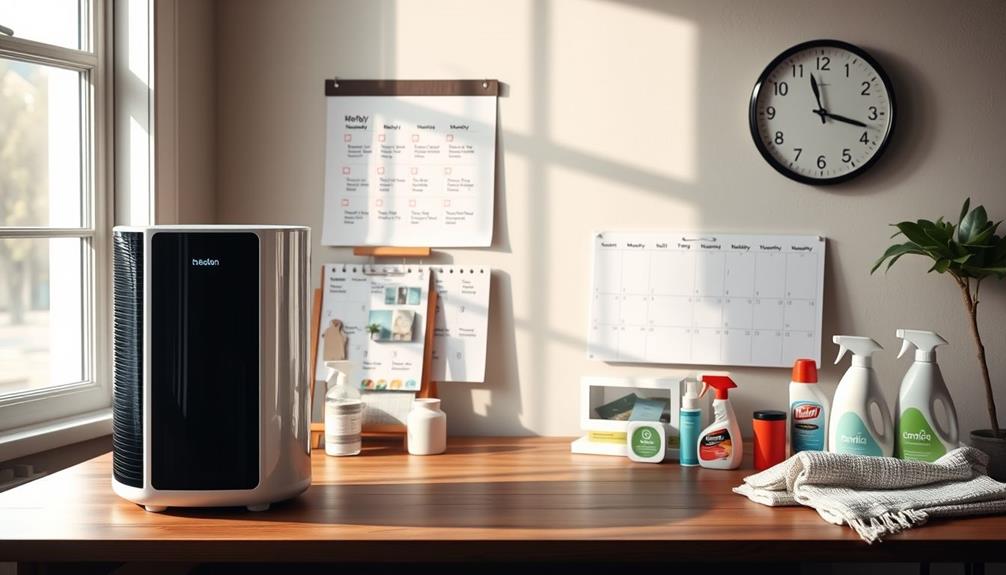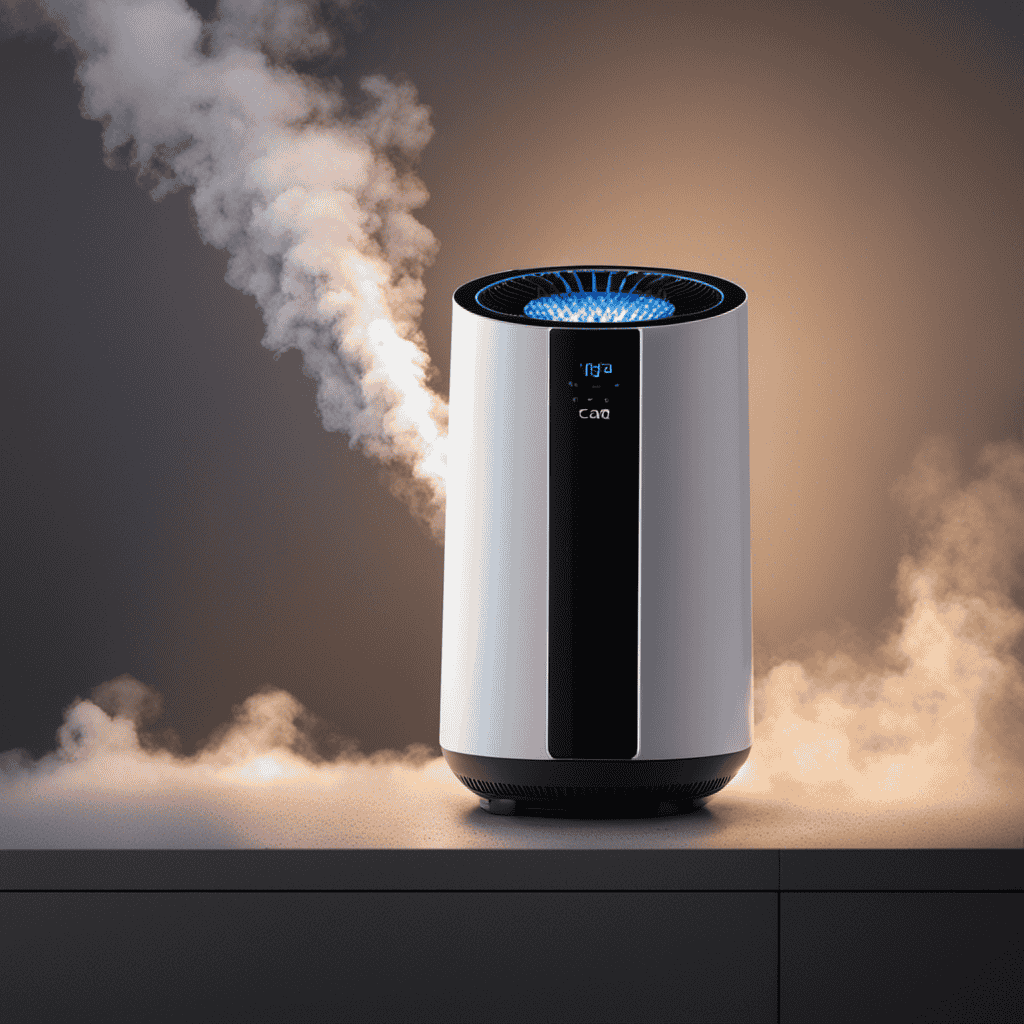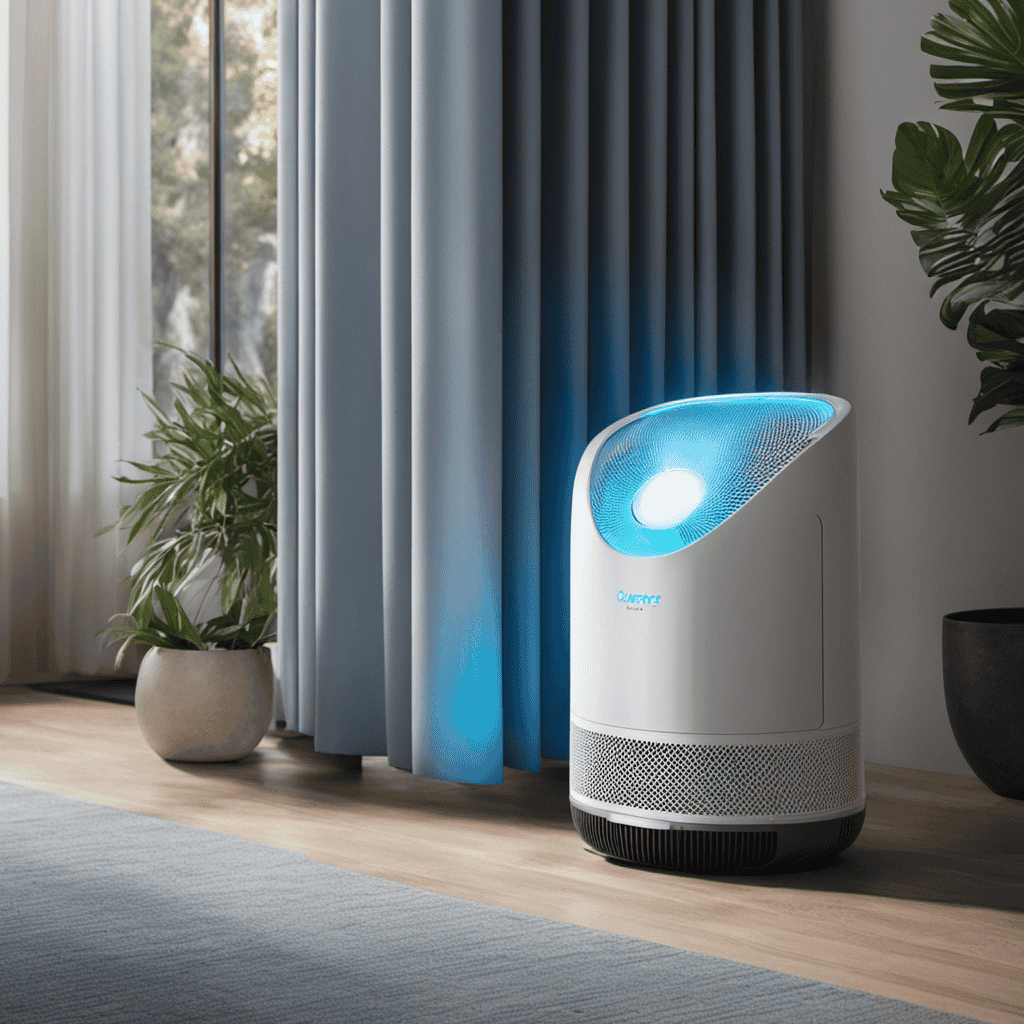To clean your air purifier's sensor for peak performance, start by unplugging the unit for safety. You'll need a soft brush, microfiber cloth, and compressed air. Gently wipe the sensor with the cloth or brush to remove dust, then use compressed air to blow away any remaining particles. Make sure the sensor is completely dry before plugging the purifier back in. Aim to clean the sensor every 1-3 months for accurate air quality readings and efficient operation. Keeping up with this routine can make a significant difference, and there's more you can do to guarantee your purifier runs its best.
Key Takeaways
- Unplug the air purifier before cleaning to ensure safety and prevent electric shock.
- Use a soft brush or damp cloth to gently clean the sensor surface.
- Blow away dust with compressed air, avoiding direct contact with the sensor.
- Allow the sensor to air dry completely before re-plugging the unit.
- Clean the sensor every 1-3 months for optimal performance and accurate air quality readings.
Importance of Cleaning the Sensor
Cleaning your air purifier's sensor is fundamental for maintaining its performance. Regular cleaning guarantees accurate air quality readings, which are essential for effective monitoring. When dust and debris accumulate on the sensor, you risk receiving false readings that can lead to inefficient operation. Your air purifier may fail to activate when needed or may not adjust properly to changes in the air quality.
This is particularly important since air purifiers reduce allergens and harmful particles, making their accurate function critical for a healthy environment.
A clean sensor enhances your purifier's ability to detect shifts in air quality quickly, allowing for ideal adjustments in filtration speed and power. This responsiveness not only boosts efficiency but also contributes to the overall lifespan of the device.
If you neglect to clean the sensor, the air purifier may work harder to compensate for inaccurate readings, ultimately diminishing its longevity.
Manufacturers often recommend cleaning the sensor every 1-3 months, depending on the air quality and environment. By following these guidelines, you'll guarantee that your air purifier operates at peak performance and efficiency.
Prioritizing sensor cleaning helps you maintain a healthy indoor environment, making certain you breathe clean air without disruption.
Preparation and Safety Measures
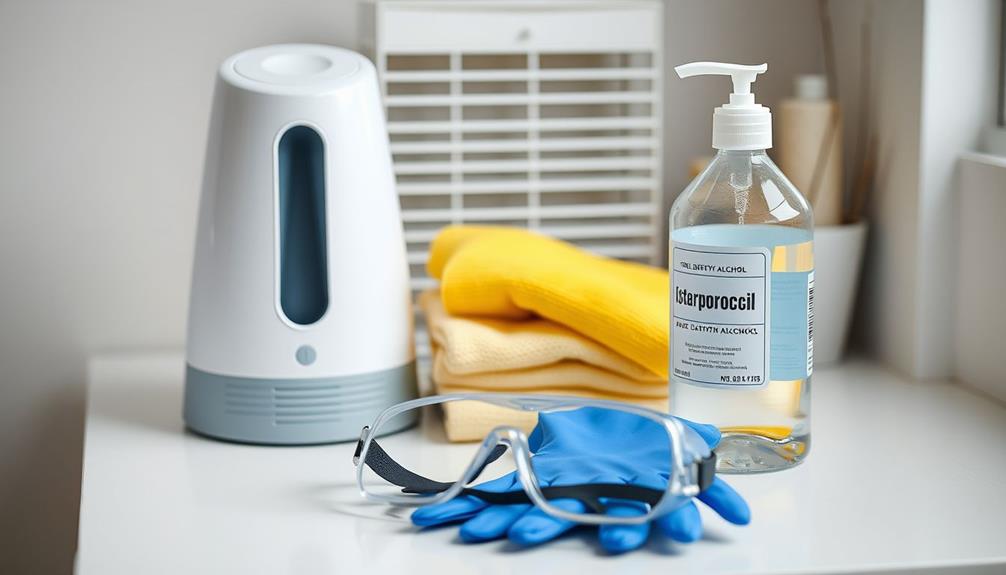
To guarantee your air purifier continues to function at its best, taking proper precautions before cleaning its sensor is important. First, always unplug the unit to make certain safety and prevent electrical shock during maintenance.
Additionally, understanding the importance of essential items for a home cleaning kit can help you gather the right supplies for this task. Next, gather the necessary cleaning supplies like a soft brush, damp cloth, and compressed air. These tools will help you clean the sensor effectively without causing damage.
Make sure to choose a well-ventilated area for your cleaning process. This allows any particles dislodged during cleaning to dissipate and avoids recontaminating your air purifier.
It's also essential to consult the user manual for your specific model, as different models may have unique sensor cleaning requirements.
Before you start, wear protective gloves to shield your hands from sharp edges and prevent skin contact with any residual dust or particles.
Step-by-Step Cleaning Process

When it comes to cleaning the air purifier's sensor, starting with the basics is essential. First, unplug the air purifier to guarantee your safety and prevent any risk of electric shock. Heat pumps, like air purifiers, require regular maintenance to function efficiently and effectively; common issues can arise from neglecting care.
Next, take a soft brush or a microfiber cloth and gently wipe the sensor surface. Avoid using harsh chemicals, as they can damage the sensor's delicate components.
If the sensor has accumulated dust or debris, grab a can of compressed air. Use it to blow away any particles without direct contact, guaranteeing thorough cleaning without causing damage. This step is vital for maintaining the sensor's accuracy in detecting air quality.
After you've finished cleaning, allow the sensor to air dry completely before plugging the air purifier back in. This prevents any moisture from interfering with its functionality.
Remember to check and clean the sensor every few months. Regular cleaning helps maintain peak performance, guaranteeing your air purifier continues to work efficiently and accurately.
Tips for Maintaining Sensor Performance
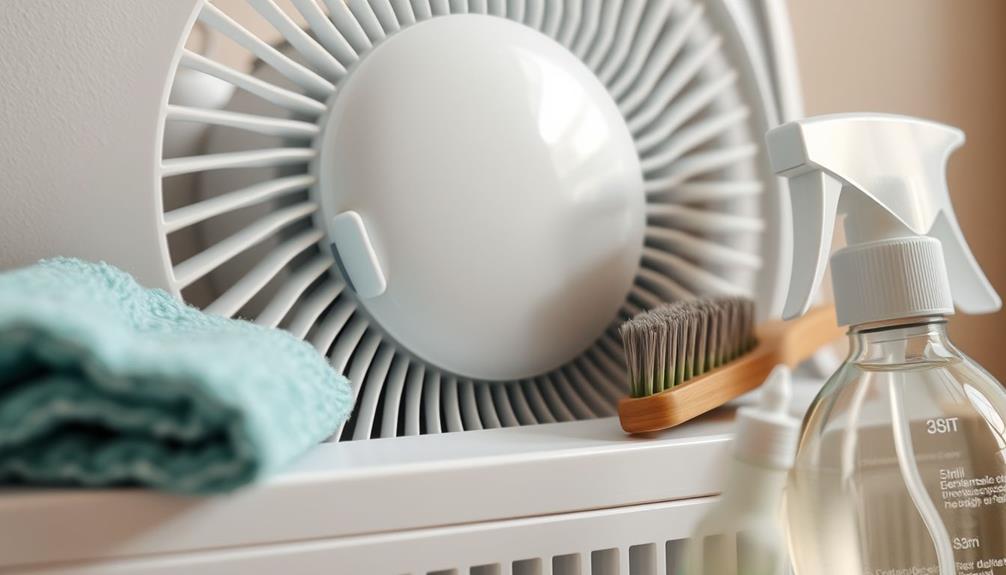
Maintaining your air purifier's sensor is key to ensuring it operates effectively over time. Regular cleaning keeps the sensor free from dust and debris that can impact its accuracy. To help you stay on track, here are some essential recommendations for ideal sensor maintenance:
| Tip | Action | Frequency |
|---|---|---|
| Clean the sensor | Use a soft brush or compressed air | Every 1-3 months |
| Check user manual | Follow specific cleaning guidelines | As needed |
| Avoid harsh chemicals | Stick to gentle cleaning methods | Always |
Monitoring and Troubleshooting Issues
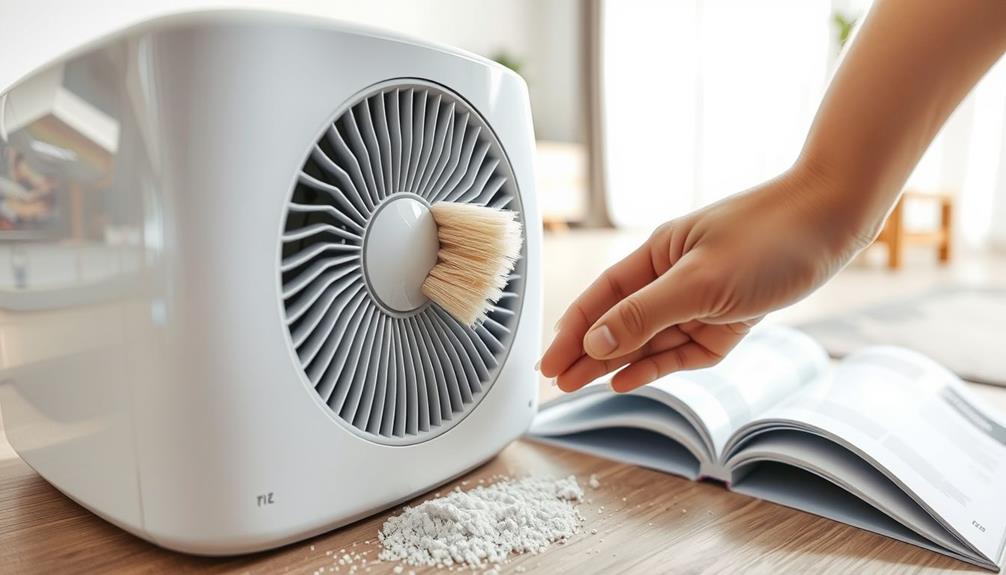
Monitoring your air purifier's sensor is vital for maintaining ideal air quality. Regular checks and troubleshooting can prevent performance issues and guarantee your unit operates effectively.
A well-functioning air purifier not only enhances indoor air quality but also contributes to the overall safety of your home environment, similar to the benefits of home security systems.
Here are three key steps to follow:
- Inspect for Dust: Regularly check the sensor for dust accumulation. A dirty sensor can lead to inaccurate air quality readings.
- Clean the Sensor: Use a soft brush or compressed air to clean the sensor lens gently. Keeping it unobstructed is essential for maximum detection of air contaminants.
- Monitor Indicators: Pay attention to the air quality indicators on your purifier. If they show inconsistent readings, that's a sign the sensor may need cleaning or maintenance.
Always consult your user manual for model-specific instructions on cleaning and maintenance frequency.
After cleaning, conduct routine checks on the sensor's functionality to guarantee it accurately responds to changes in air quality.
This proactive approach will help you troubleshoot any issues and maintain your air purifier's performance, ensuring you breathe the cleanest air possible.
Conclusion
Cleaning your air purifier's sensor is like tuning a guitar; a little attention can make a big difference in performance. By following the steps outlined, you guarantee your purifier runs efficiently, providing you with pristine air quality. Remember, just as musicians regularly maintain their instruments, you should regularly check and clean your sensor. Stay proactive, and your air purifier will continue to create a harmonious environment for you and your loved ones, free from dust and allergens.

